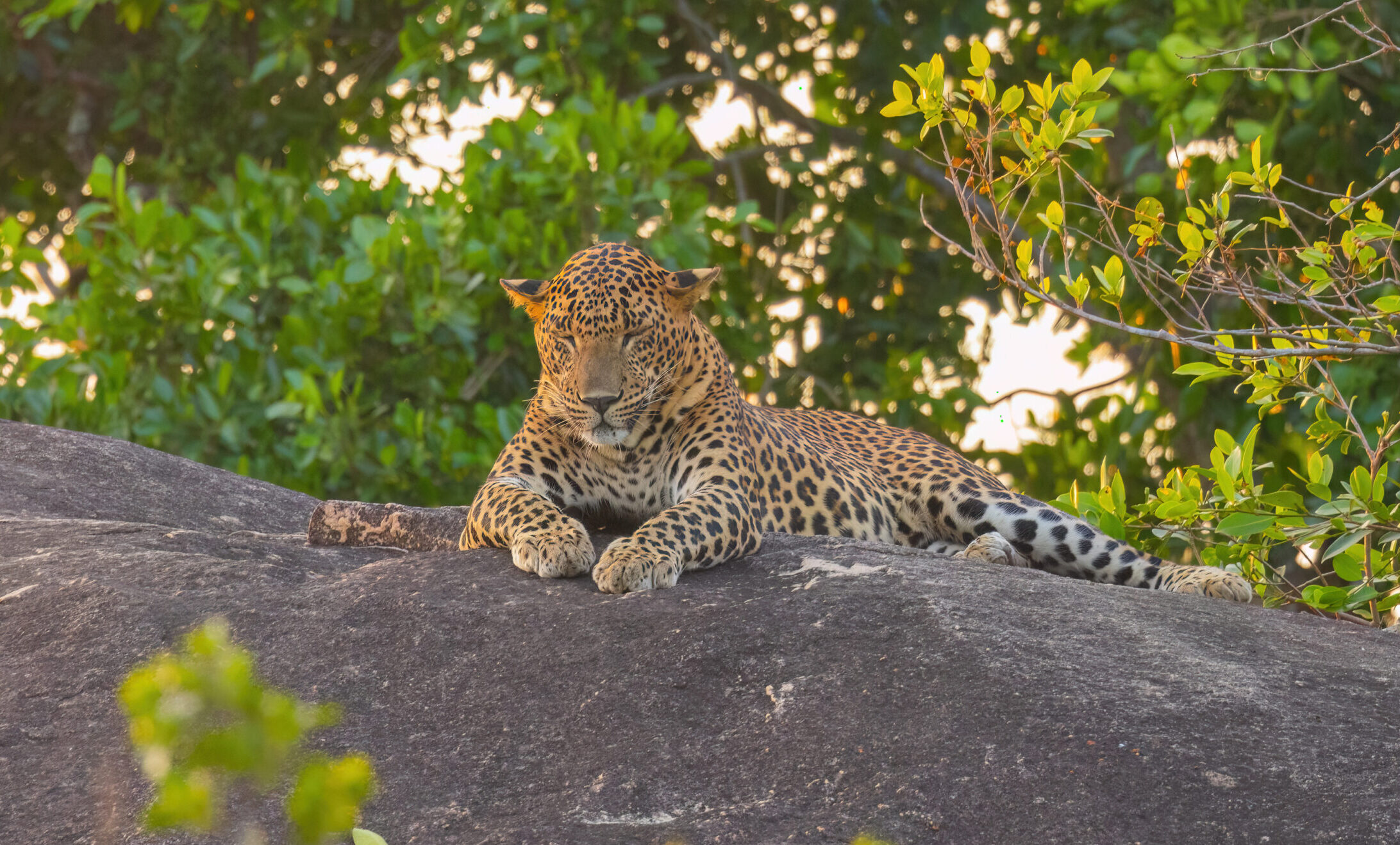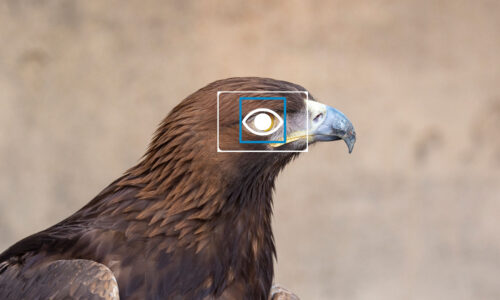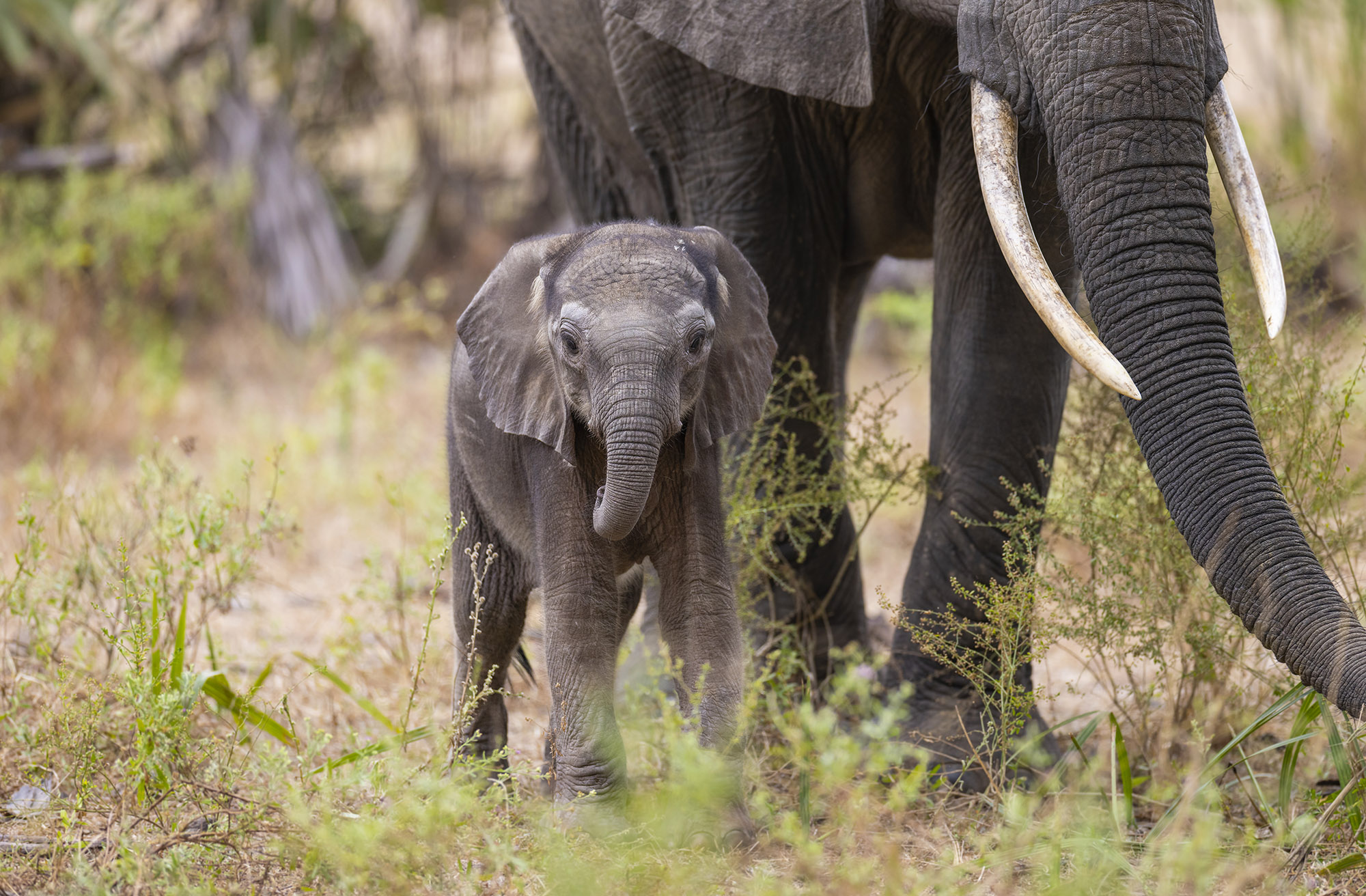On Safari With The RF100-500MM

This is the story of my recent trip to Yala National Park.
Yala has around 130,000 hectares of protected park land with the highest concentration of wild Leopards in the entire world. So based on that we should see Leopards all the time, right?
The accommodation was very close to the main park entrance and was actually very nice, the rooms were clean, tidy, food was very good and the staff very friendly and welcoming.
The drive was only around 20 minutes from the lodge to the park entrance. The car was modified for safari game drives, was comfortably and seemed quite safe. Overall I felt the visibility from within the vehicle could have been better, especially for photographers in mind.
Yala is the most visited park in Sri Lanka. Quite early on I found there to be too many vehicles to actually enjoy the safari experience. I’m not sure if there is a limit to the amount of vehicles the park can accommodate. Our guide mentioned there was around 250 vehicles in the park during our game drive.
Anyway, it wasn’t long before we came across a large elephant grazing on the main dirt road leading in to the park. It seemed quite calm and didn’t mind the vehicles passing by.
The experienced seemed a bit frenetic with the drivers constantly over taking and racing each other, probably trying to please their passengers.
A few kilometres further in the park we stumbled across another amazing elephant experience. A small herd was bathing in the lake to the right of us. There was a very small baby elephant amongst the herd.
It was very frustrating seeing cars constant passing us as we were trying to capture the moment. The drivers only really seemed to care about the experience of their own passengers and, unfortunately, showed almost zero courtesy for other vehicles. This is probably due to the large concentration of safari vehicles in such a small area of the park.
However, it was still a great moment to see these animals in their natural environment despite the lack of courtesy from the other drivers.
We waiting around for a while as the herd of elephants looked like they were about to moved out of the water and on to the land next to us.
I think elephant viewings like this are always going to be the highlight of any trip. This was certainly an amazing experience despite the amount of vehicles jostling for position for the best view. I was a little surprised the elephants didn’t mind the attention, especially with such a young baby. They just carried on grazing by the side of the road.
Only a few weeks ago the park was actually closed due to severe flooding. You can probably see from the video footage the roads are in very bad condition due to flood damage, and haven’t been repaired very well.
With hundreds of safari vehicles going through the main gates very day it’s a wonder if they will ever be repaired. This had a huge impact on the game drives, as we simply couldn’t travel very far away from the main gate, limiting the potential sightings of leopards, elephants and other animals.
Most sightings were of animals we could actually see anywhere in Sri Lanka such as various species of birds such as eagles, storks, herons, peacocks, large mammals such buffalo and even elephants and spotted deer can be found outside the national parks. So why are we paying someone to drive us around when we can see all these animals elsewhere?
Anyway, the park closes at 6pm so all vehicles have to make their way to the exit in time. This is also very frustrating as sightings of leopards is more likely during sunset.
Morning drives can sometimes be a better option as the driver doesn’t have any time constraints, he’s able to drive deeper in to the park. However, the park opens at 6am, so if you don’t see a leopard within the first 30 minutes you’re not likely to see one for the rest of the game drive.
That probably explains why so many drivers were racing each other the park gate.
The morning drive seemed slightly more relaxed than the evening drive but because some of the roads were un passable we couldn’t travel that far. This meant we were constantly driving past and overtaking other vehicles, in some instances it felt like the drivers were actually racing against each other.
For most of the drive we didn’t really see anything we couldn’t see outside the park.
We then stopped off for a toilet break and ate the food our lodge had prepared for us. The facilities in the park are fine, just remember to pack your own tissues, hand sanitiser and wipes as there may not be any soap or running water.
It’s now around mid morning and the temperature is rising quite quickly. Around February the park can be quite hot and very humid. Still had time to see more animals we were able to see outside the park.
If you’re a bird fanatic then Yala is great place to visit. The park is home to over 215 different species. Sightings include this Oriental Honey Buzzard, Crested Serpent Eagle, Brahminy Kite, Bee-Eaters, Hornbills, Kingfishers. But they’re birds, you could find them anywhere in southern Sri Lanka.
We had more time to kill so we explored new areas of the park before heading towards the exit and then back to the lodge for lunch.
On our way out we did find this Golden Jackal eating an egg. That was probably the highlight of the morning drive. We also came across the group of Grey Langur monkey’s. The baby monkeys were playing around which was fun to watch.
I mentioned earlier the visibility from within the vehicle wasn’t the best, especially if you’re actually trying to take good photos.
Anyway, back in to the park for our final game drive.
Like any safari the park is seasonal and therefore the overall experience can be dependant on several factors such as wet or dry season and the temperature. This will have an on impact animal sightings, especially leopard sightings. I travelled in February which is considered a good time to visit as it’s during the dry season, but the park suffered extreme flooding only a few weeks prior, and was clearly still recovering.
February to June is considered the better time to visit, I think probably April to June might be more accurate to allow the park to dry out and recover from any flood damage during the wet season. November and December is alos considered a good time to visit as this is generally in between seasonal monsoons.
As our evening game drive came to an end our driver and guide we alerted to a potential leopard sighting.
Unfortunately, for me, the whole experience so slightly ruined by the frantic and boisterous nature of the drivers. Also, overcrowding the park with safari vehicles was not helpful for game viewings, even though it didn’t seem to bother the animals too much.
I’ll give some benefit of doubt, as the park had suffered major flooding recently, which may have impacted our overall experience.
Nothing like some of the game drives I experienced in Africa.


